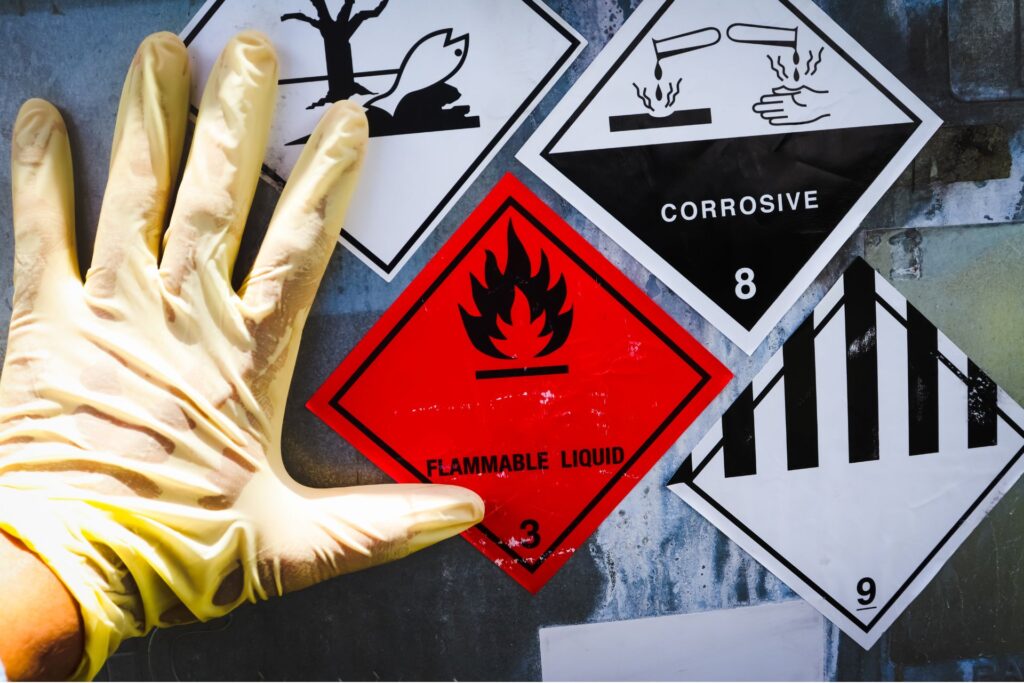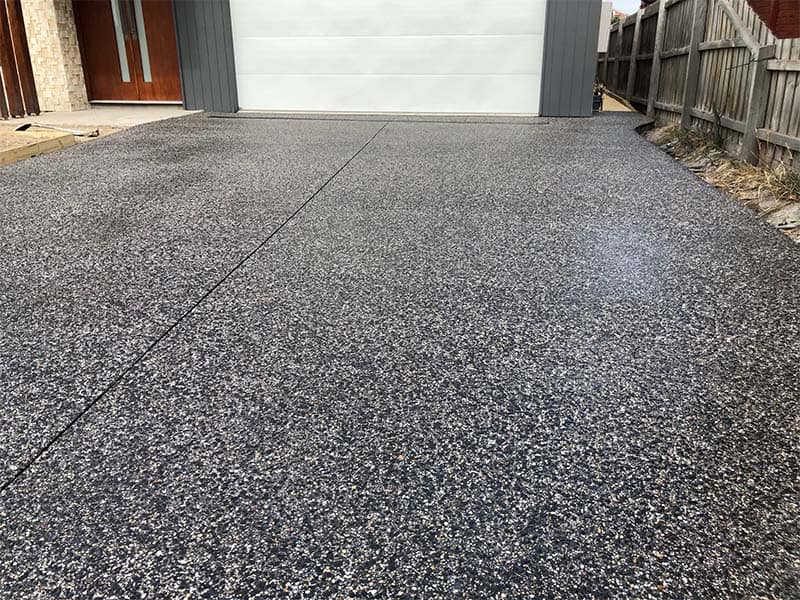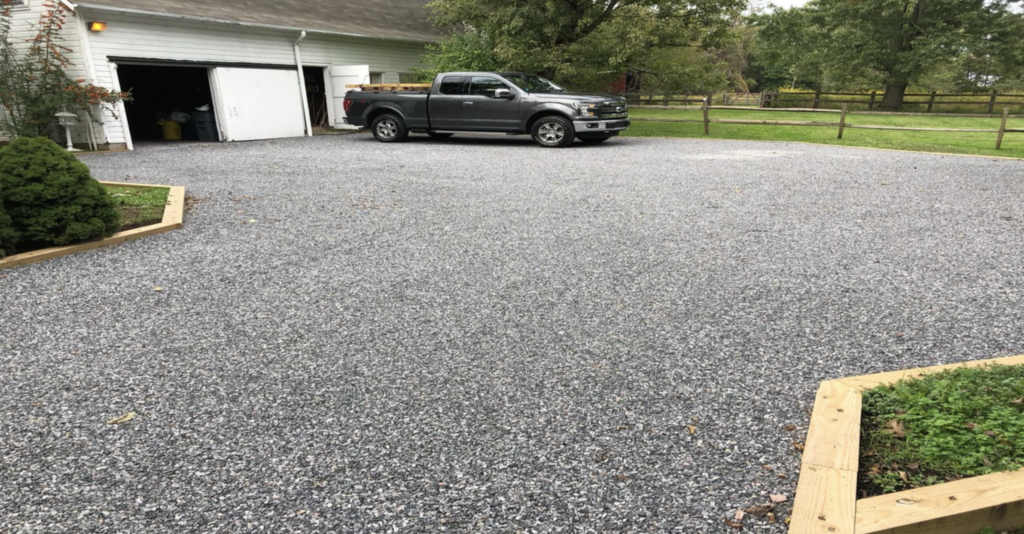Welcome to an in-depth exploration of the fascinating world of concrete hardening. Whether you’re a seasoned construction professional or a DIY enthusiast, understanding the chemicals that play a crucial role in transforming concrete from a pliable mixture into a rock-solid foundation is essential. In this article, we’ll unravel the mystery behind the key substances that drive this transformation, such as calcium silicate hydrate, and delve into the various types of chemical hardeners that enhance concrete strength, durability, and overall performance. Join us as we uncover the science, applications, and benefits of these vital components, providing you with valuable insights to appreciate the intricacies of this ubiquitous material.
The primary chemical used to harden concrete is Calcium Silicate Hydrate (CSH). This compound forms during the hydration process when cement reacts with water, creating a strong and durable matrix that gives concrete its solid structure. Other important chemicals, such as calcium hydroxide and ettringite, also play crucial roles in enhancing concrete’s strength and durability.
- Basics Of Concrete
- Key Chemicals In Concrete Hardening
- Types Of Chemical Hardeners
- Application And Benefits Of Chemical Hardeners
- Case Studies And Real-World Applications
- Safety And Environmental Considerations
- FAQs: About What Chemical Is Used To Harden Concrete
- What is the primary chemical used to harden concrete?
- What role does calcium chloride play in concrete hardening?
- Are there environmentally friendly alternatives to traditional chemical hardeners?
- How do water reducers and superplasticizers affect concrete?
- What are air-entraining agents and why are they used?
- How are chemical hardeners applied to concrete?
- What safety precautions should be taken when handling chemical hardeners?
- Can chemical hardeners be used in both commercial and residential projects?
- What are some common misconceptions about chemical hardeners in concrete?
- How does the use of pozzolans like fly ash improve concrete?
- Conclusion
Basics Of Concrete
What is Concrete?
Concrete is a composite material widely used in construction, composed primarily of three key ingredients: cement, water, and aggregates. Aggregates can include sand, gravel, crushed stone, or other materials. The versatility and strength of concrete make it an essential element in modern construction, from building foundations to intricate architectural designs.
Definition and Basic Components
Concrete is created by mixing cement, water, and aggregates in precise proportions. Cement acts as the binder, water initiates the chemical reaction necessary for hardening, and aggregates provide structural integrity and bulk. The blend of these components results in a material that can be molded into various shapes before it hardens into a durable and robust substance.
Brief History and Evolution of Concrete
The history of concrete dates back to ancient civilizations. The Romans were particularly innovative, using a form of concrete in the construction of enduring structures like the Pantheon and aqueducts. Their version included volcanic ash, which enhanced the durability of the material. Over centuries, concrete has evolved significantly. Modern advancements have introduced reinforced concrete, which integrates steel bars or mesh to improve tensile strength, allowing for the construction of skyscrapers and long-span bridges. Innovations continue today with the development of sustainable and high-performance concrete types.
The Concrete Hardening Process
Understanding the concrete hardening process is crucial for appreciating its reliability and application in construction.
Introduction to the Process of Hydration
Hydration is the chemical reaction that occurs when cement and water mix. This reaction is fundamental to concrete’s transformation from a plastic, workable mixture to a solid, sturdy material. Hydration involves several stages, starting immediately after the mixing of cement and water.
How Concrete Transitions from a Plastic State to a Solid State
Initially, concrete is in a plastic state, which means it is malleable and can be shaped to fit molds or forms. This period is critical for placing and finishing the concrete to achieve the desired surface texture and structural shape. As hydration progresses, the mixture begins to stiffen. The calcium silicate compounds in cement react with water, forming calcium silicate hydrate and calcium hydroxide. This process releases heat and gradually leads to the hardening of the concrete. Over time, concrete continues to gain strength as the hydration reaction persists, often reaching its designed strength after about 28 days.
The hardening process is influenced by several factors, including the water-cement ratio, ambient temperature, and the presence of additives or admixtures. Proper curing, which involves maintaining adequate moisture and temperature conditions, is essential to ensure that the concrete reaches its full potential in terms of strength and durability.
Understanding these basics helps in appreciating why concrete is so valued in construction. Its evolution, components, and the intricate process of hardening all contribute to its indispensable role in building the infrastructure that shapes our world.
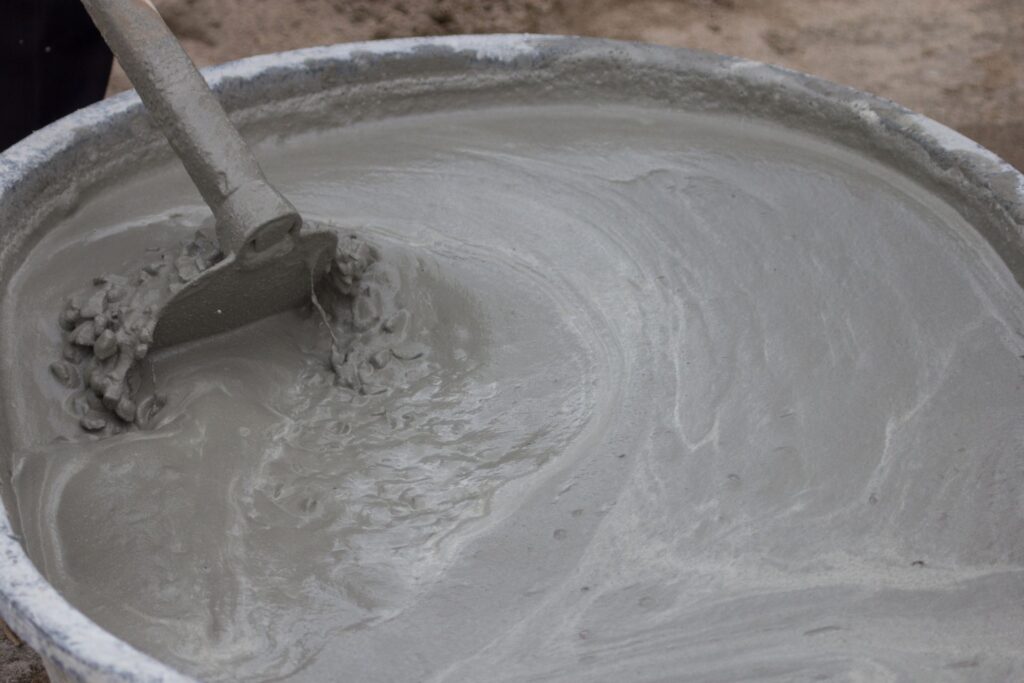
Key Chemicals In Concrete Hardening
Introduction to Concrete Admixtures
Concrete admixtures are materials added to the concrete mix before or during mixing to enhance the properties of the concrete. These additives can improve workability, accelerate or retard setting time, increase strength, and enhance durability. Admixtures play a crucial role in modern construction by allowing for the customization of concrete to meet the specific requirements of different projects.
Primary Chemical: Calcium Silicate Hydrate (CSH)
One of the primary chemicals responsible for the hardening of concrete is Calcium Silicate Hydrate (CSH). CSH is formed during the hydration process, where water reacts with cement. This reaction produces a gel-like substance that binds the concrete together, giving it strength and stability. As the hydration process continues, CSH fills the gaps within the concrete mixture, resulting in a denser and more robust structure. The formation of CSH is fundamental to the hardening process because it directly contributes to the mechanical properties of the finished concrete.
Other Important Chemicals
In addition to CSH, several other chemicals significantly influence the hardening and overall performance of concrete:
Calcium Hydroxide: This byproduct of the hydration process helps to maintain a high pH environment, which is essential for the ongoing hydration of other compounds and the overall durability of the concrete.
Ettringite: This compound forms during the initial stages of hydration and contributes to the early strength of concrete. Ettringite formation is crucial in preventing shrinkage and cracking during the early setting period.
Additional Compounds: There are various other chemical compounds and minerals that influence the strength and durability of concrete. These include pozzolanic materials like fly ash and silica fume, which react with calcium hydroxide to form additional CSH, further enhancing the concrete’s properties.
By understanding the role of these chemicals, builders and engineers can better control the concrete hardening process, ensuring the material meets the necessary standards for strength and durability. This knowledge allows for the optimization of concrete mixes to suit different environmental conditions and structural requirements, ultimately leading to safer and more reliable construction practices.

Types Of Chemical Hardeners
Chemical hardeners play a crucial role in the performance and durability of concrete. Understanding the different types and their specific functions can help you make informed decisions for your construction projects. Here, we delve into the primary categories of chemical hardeners and their respective benefits.
Accelerators
Definition and Purpose
Accelerators are admixtures added to concrete to speed up the hydration process, which is the chemical reaction between cement and water that gives concrete its strength. By accelerating this process, these admixtures reduce the setting time, allowing for faster project completion.
Common Accelerators
One of the most commonly used accelerators is calcium chloride. This compound is highly effective in cold weather conditions where concrete settings can be significantly delayed due to low temperatures.
Benefits and Applications
Faster Setting Time: Accelerators reduce the setting time, enabling quicker progress in construction projects.
Early Strength Development: They help achieve early strength in concrete, which is beneficial for structures that need to be quickly put into service.
Cold Weather Concreting: In colder climates, accelerators help maintain productivity by ensuring that the concrete sets properly despite the low temperatures.
Water Reducers and Superplasticizers
How They Work
Water reducers and superplasticizers are admixtures that enhance the workability of concrete without adding extra water. They achieve this by reducing the water-cement ratio, which improves the concrete’s strength and durability.
Impact on Concrete Workability and Strength
Improved Workability: These admixtures make the concrete mix more fluid and easier to handle, which is particularly useful for complex forms or intricate molds.
Increased Strength: By reducing the water content, they enhance the overall strength of the concrete, leading to more robust and durable structures.
Enhanced Durability: Lower water content reduces the likelihood of shrinkage and cracking, contributing to the long-term durability of the concrete.
Pozzolans
Definition and Examples
Pozzolans are materials containing siliceous or aluminous substances that react with calcium hydroxide to form compounds possessing cementitious properties. Common examples include fly ash and silica fume.
Role in Enhancing Concrete Durability
Improved Resistance: Pozzolans increase the resistance of concrete to sulfate attacks and other chemical exposures.
Reduced Permeability: They decrease the permeability of concrete, making it less susceptible to water penetration and the subsequent freeze-thaw damage.
Eco-Friendly Option: Many pozzolans, such as fly ash, are industrial by-products, making their use an environmentally friendly option that also enhances the concrete’s performance.
Air-Entraining Agents
Purpose and Benefits
Air-entraining agents introduce tiny air bubbles into the concrete mix, which significantly improves its performance under certain conditions.
How They Improve Concrete’s Resistance to Freeze-Thaw Cycles
Enhanced Durability: The tiny air bubbles provide space for water to expand upon freezing, thereby reducing internal pressure and preventing cracking.
Increased Workability: These agents improve the workability of the concrete, making it easier to place and finish.
Longevity: Air-entrained concrete is more durable in regions subject to frequent freeze-thaw cycles, leading to longer-lasting structures with fewer maintenance needs.
Incorporating the right type of chemical hardener into your concrete mix can significantly enhance the performance and longevity of your construction projects. By understanding the specific benefits and applications of each type, you can ensure that your concrete structures are both durable and resilient.

Application And Benefits Of Chemical Hardeners
Chemical hardeners are an essential component in modern construction, particularly when dealing with concrete. These hardeners play a crucial role in enhancing the performance and longevity of concrete structures. This section delves into the methods of applying chemical hardeners and their numerous benefits.
Methods of Application
Mixing with Concrete Batch
One of the primary methods of applying chemical hardeners is by mixing them directly into the concrete batch during the initial mixing stage. This approach ensures that the hardener is evenly distributed throughout the entire mix, leading to a uniform improvement in the concrete’s properties. The process involves adding the chemical hardener to the dry ingredients before the addition of water. As the mixing process continues, the hardener integrates with the cement particles, enhancing the chemical reactions that occur during hydration. This method is particularly effective for large-scale construction projects where consistent quality and performance are critical.
Surface Application Techniques
Another common method of applying chemical hardeners is through surface application techniques. This involves applying the hardener to the surface of the concrete after it has been poured and has started to set. Surface application can be done using various techniques, including spraying, brushing, or rolling. The hardener penetrates the surface and reacts with the free lime in the concrete, creating a denser and harder surface layer. This method is ideal for projects where only the surface needs enhancement, such as flooring, driveways, and industrial slabs. Surface application is also beneficial for repairing and strengthening existing concrete structures.
Benefits
Increased Strength and Durability
One of the most significant benefits of using chemical hardeners is the increased strength and durability they impart to concrete. By enhancing the chemical reactions during hydration, hardeners help to create a denser microstructure within the concrete. This results in higher compressive and tensile strength, making the concrete more resistant to cracking and other forms of structural damage. Durable concrete structures are essential for the longevity and safety of buildings, bridges, and other infrastructure.
Improved Workability and Finish
Chemical hardeners also improve the workability and finish of concrete. When mixed into the batch, they can reduce the water-to-cement ratio needed, making the concrete easier to work with while still maintaining its strength. This leads to smoother, more uniform surfaces that require less finishing effort. For surface applications, hardeners can enhance the surface appearance, providing a polished, professional look that is both aesthetically pleasing and functional. Improved workability means that construction teams can achieve better results more efficiently, saving time and labor costs.
Enhanced Resistance to Environmental Factors
Concrete structures are often exposed to harsh environmental conditions, including moisture, chemicals, and temperature fluctuations. Chemical hardeners significantly enhance the resistance of concrete to these factors. By reducing the permeability of the concrete, hardeners prevent water and other harmful substances from penetrating the surface, thus reducing the risk of damage from freeze-thaw cycles, chemical corrosion, and other environmental stressors. Enhanced resistance to environmental factors is crucial for maintaining the structural integrity and appearance of concrete over time, reducing maintenance costs, and extending the lifespan of the structure.
In conclusion, the application of chemical hardeners in concrete offers numerous benefits that improve both the immediate performance and long-term durability of concrete structures. Whether through mixing with the concrete batch or surface application techniques, chemical hardeners play a vital role in modern construction, providing enhanced strength, workability, and resistance to environmental challenges.
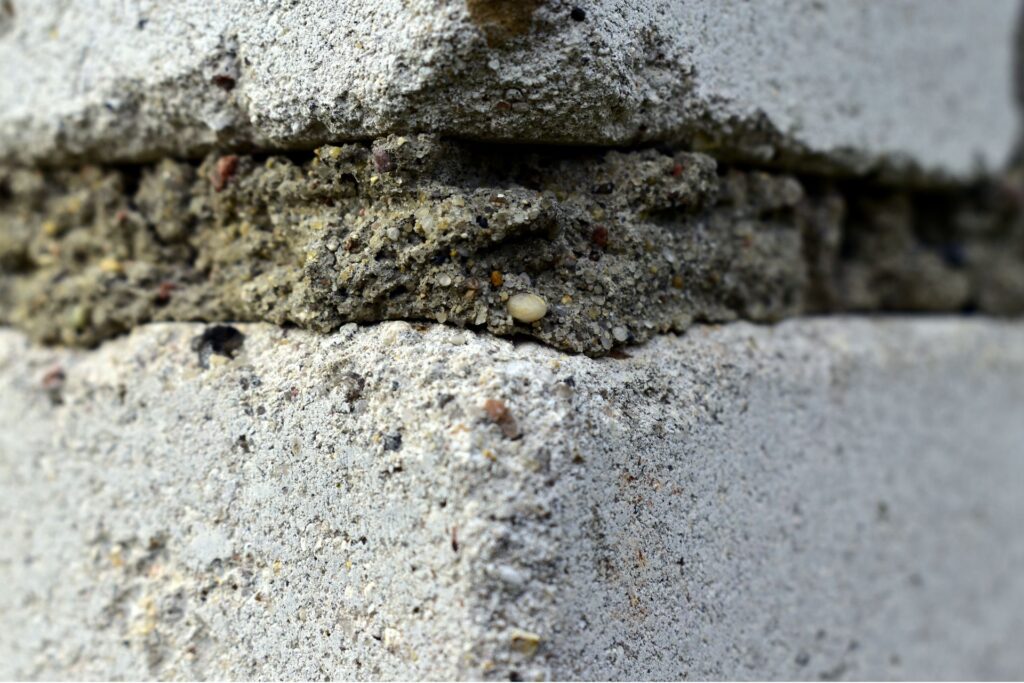
Case Studies And Real-World Applications
Commercial Construction
In the realm of commercial construction, chemical hardeners have become indispensable for large-scale projects. These substances are used to enhance the durability and longevity of concrete surfaces, making them ideal for high-traffic areas like shopping malls, warehouses, and office buildings. For instance, consider the impressive project of the Auckland Convention Centre. This state-of-the-art facility utilized chemical hardeners to ensure the concrete floors could withstand the heavy foot traffic and the wear and tear from various events. The result is a sleek, polished surface that not only looks good but also offers superior resistance to abrasions and spills, ensuring longevity and reduced maintenance costs.
Another notable example is the SkyCity precinct, where chemical hardeners were used extensively in the construction of both the casino and its surrounding infrastructure. The decision to use these hardeners was driven by the need for a durable, low-maintenance flooring solution that could handle the constant flow of visitors. The chemical hardeners enhanced the concrete’s surface, providing a robust and resilient finish that meets the high standards required for such a bustling environment.
Residential Projects
When it comes to residential projects, homeowners and DIY enthusiasts can also reap the benefits of chemical hardeners. These products are not just for large-scale commercial use; they are equally effective in enhancing the durability of home surfaces. For example, in residential garages and basements, applying a chemical hardener can significantly increase the lifespan of the concrete floor, protecting it from oil stains, water damage, and general wear and tear. Homeowners who undertake DIY renovations will find that using chemical hardeners can provide a professional-grade finish to their projects.
One homeowner in Christchurch shared their experience of using a chemical hardener for their garage floor. Before applying the hardener, the concrete surface was prone to dusting and minor cracks. However, after treatment, the floor became much more resistant to these issues, providing a clean, hard surface that was easy to maintain. This simple application extended the life of their garage floor and improved its overall appearance, demonstrating the practical benefits of chemical hardeners in residential settings.
Innovative Uses
Looking towards the future, the applications of chemical hardeners in concrete hardening are becoming increasingly innovative. With advancements in technology, these products are being used in more creative and efficient ways. One such cutting-edge application is in the field of 3D printing. Researchers are experimenting with chemical hardeners to enhance the properties of 3D-printed concrete structures, aiming to create more durable and resilient components for both residential and commercial use.
Additionally, there is a growing trend towards sustainable construction practices. Chemical hardeners are being developed to include more eco-friendly ingredients, reducing the environmental impact of construction projects. For example, companies are now producing hardeners that incorporate recycled materials or that require less energy to manufacture and apply. This innovation not only benefits the environment but also aligns with the increasing demand for sustainable building practices.
In conclusion, the use of chemical hardeners in concrete construction is not limited to traditional applications. From enhancing large commercial projects to providing durable solutions for residential homes, and pushing the boundaries with innovative uses, chemical hardeners are proving to be a versatile and valuable tool in the construction industry. As technology continues to advance, we can expect even more exciting developments in this field, further cementing the importance of chemical hardeners in creating durable, resilient, and sustainable concrete structures.
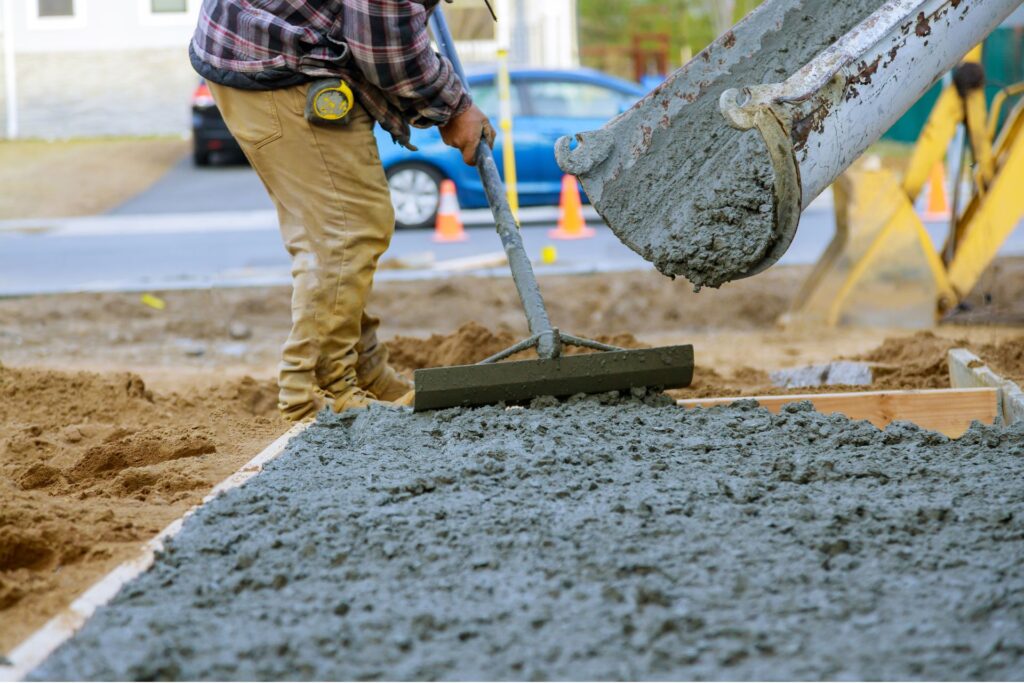
Safety And Environmental Considerations
Handling and Usage Safety
When working with concrete, especially chemical hardeners, safety is paramount. These substances can be hazardous if not handled correctly. Here are some essential precautions to ensure safe handling and usage:
1. Personal Protective Equipment (PPE): Always wear appropriate PPE, including gloves, safety goggles, and respirators. Chemical hardeners can cause skin irritation, eye damage, and respiratory issues if inhaled.
2. Ventilation: Ensure that your workspace is well-ventilated. Chemical fumes can accumulate, leading to potential health risks. Using fans or working in open spaces can help mitigate this danger.
3. Proper Mixing: Follow the manufacturer’s instructions for mixing and applying chemical hardeners. Incorrect mixing ratios can lead to ineffective treatment and an increased risk of exposure to harmful chemicals.
4. First Aid Measures: Be familiar with first aid procedures in case of accidental exposure. Having an eyewash station and knowing the location of safety showers can be crucial in an emergency.
Proper storage and disposal of chemical hardeners are also critical to maintaining a safe work environment:
1. Storage: Store chemical hardeners in a cool, dry place away from direct sunlight and out of reach of children and pets. Ensure containers are tightly sealed to prevent leaks or spills.
2. Disposal: Dispose of chemical hardeners according to local regulations. Many communities have specific guidelines for hazardous waste disposal to prevent environmental contamination.
Environmental Impact
Concrete production and usage have significant environmental implications. However, there are several ways to mitigate these impacts through eco-friendly alternatives and sustainable practices.
1. Eco-friendly Alternatives: Consider using alternative materials like fly ash, slag, or silica fume in your concrete mix. These materials can reduce the reliance on traditional Portland cement, which is energy-intensive to produce.
2. Sustainable Practices: Implement practices such as recycling concrete waste and using recycled aggregates. These practices can reduce the environmental footprint of construction projects and promote a circular economy.
Advances in green concrete technologies are making it possible to create more sustainable construction materials:
1. Carbon Capture Concrete: This innovative technology involves capturing carbon dioxide emissions during the production process and incorporating them into the concrete. This not only reduces greenhouse gas emissions but also enhances the strength and durability of the concrete.
2. Permeable Concrete: Permeable or porous concrete allows water to pass through, reducing runoff and promoting groundwater recharge. This is particularly beneficial in urban areas where stormwater management is a concern.
By prioritizing safety and embracing environmentally friendly practices, the construction industry can make significant strides towards sustainability. These efforts not only protect workers and the environment but also contribute to the development of more resilient and sustainable infrastructure.
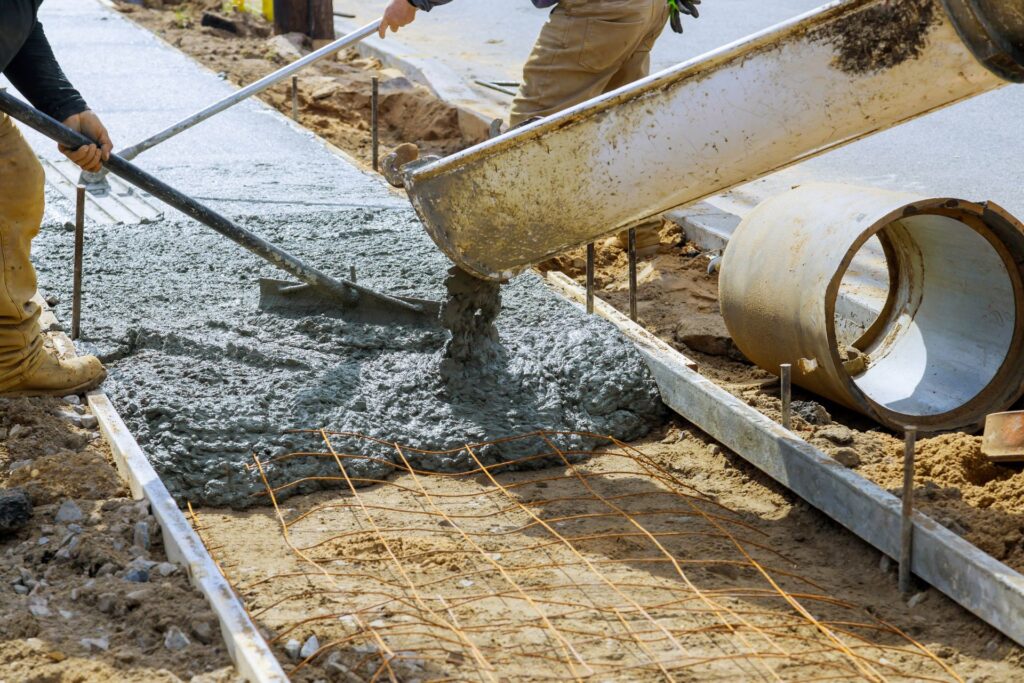
FAQs: About What Chemical Is Used To Harden Concrete
What is the primary chemical used to harden concrete?
The primary chemical used to harden concrete is Calcium Silicate Hydrate (CSH). It forms during the hydration process when cement reacts with water, creating a solid matrix that gives concrete its strength and durability.
What role does calcium chloride play in concrete hardening?
Calcium chloride is an accelerator that speeds up the hydration process, allowing concrete to set and harden more quickly. It is especially useful in cold weather conditions to reduce the setting time.
Are there environmentally friendly alternatives to traditional chemical hardeners?
Yes, there are eco-friendly alternatives such as fly ash and silica fume, which are by-products of industrial processes. These pozzolans enhance concrete strength and durability while reducing environmental impact.
How do water reducers and superplasticizers affect concrete?
Water reducers and superplasticizers increase the workability of concrete without adding extra water. This results in a stronger, more durable concrete with improved finish and reduced risk of cracks.
What are air-entraining agents and why are they used?
Air-entraining agents introduce tiny air bubbles into the concrete mix, which helps improve its resistance to freeze-thaw cycles. This is particularly important in regions with harsh winter conditions.
How are chemical hardeners applied to concrete?
Chemical hardeners can be mixed directly into the concrete batch or applied to the surface of the concrete after it has been placed. Surface application is often used for hardening and sealing purposes.
What safety precautions should be taken when handling chemical hardeners?
When handling chemical hardeners, it is important to wear appropriate protective gear such as gloves, goggles, and masks. Ensure proper ventilation and follow storage and disposal guidelines to avoid health risks and environmental damage.
Can chemical hardeners be used in both commercial and residential projects?
Yes, chemical hardeners are used in a wide range of projects, from large commercial constructions to small residential DIY projects. They enhance the performance and longevity of concrete in various applications.
What are some common misconceptions about chemical hardeners in concrete?
A common misconception is that chemical hardeners are harmful to the environment. However, many modern hardeners are designed to be eco-friendly. Another myth is that all concrete hardeners are the same, but different types have specific properties and benefits.
How does the use of pozzolans like fly ash improve concrete?
Pozzolans like fly ash react with calcium hydroxide to form additional Calcium Silicate Hydrate (CSH), which increases the strength and durability of concrete. They also help in reducing the overall carbon footprint of concrete production.
Conclusion
In conclusion, the key chemicals used in hardening concrete, such as silicates, silicones, and lithium-based products, each play a crucial role in enhancing the durability and strength of concrete structures. Silicates penetrate the surface, reacting with free lime to form calcium silicate hydrate, while silicones offer excellent water repellency and resistance to stains. Lithium-based hardeners, on the other hand, provide superior performance by minimizing alkali-silica reactions, ensuring a longer-lasting finish. Understanding these chemicals is essential for optimizing concrete performance, ensuring longevity, and maintaining the integrity of various construction projects. We invite you to share your experiences or ask any questions in the comments below. For those interested in delving deeper into this topic, we recommend exploring additional resources and further reading to expand your knowledge on the subject.
About the Author:
Mike Veail is a recognized digital marketing expert with over 6 years of experience in helping tradespeople and small businesses thrive online. A former quantity surveyor, Mike combines deep industry knowledge with hands-on expertise in SEO and Google Ads. His marketing strategies are tailored to the specific needs of the trades sector, helping businesses increase visibility and generate more leads through proven, ethical methods.
Mike has successfully partnered with numerous companies, establishing a track record of delivering measurable results. His work has been featured across various platforms that showcase his expertise in lead generation and online marketing for the trades sector.
Learn more about Mike's experience and services at https://theleadguy.online or follow him on social media:
